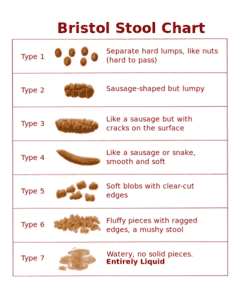Migraines are the most common type of neuro-vascular headache. And it can be extremely debilitating. Unfortunately, the most common drugs used to “treat” them can have major, longterm side effects in the GI tract which tend to create disease elsewhere.
How to treat migraines
What I highlight below is a collection of specific remedies I have seen work many times in providing longterm migraine relief. They can take 23 months to achieve full effectiveness, so it’s important to be consistent and committed and patient to get results. We have hundreds of trillions of mitochondria. These three nutrients together help our cells’ mitochondria to produce energy more effectively/
Riboflavin. Yes, the lowly Vitamin B2 is a powerful remedy for migraine. You will need 400 to 500mg once daily which is a therapeutic dose.
Magnesium. I recommend 400mg up to twice daily with food. The threonate or taurate form will be particularly potent in addressing headache (with minimal effect on bowels). The glycinate and malate forms are also effective. This is so effective that IV magnesium is used for treatment of acute migraine in care facilities.
CoQ10. Many migraines are triggered and exacerbated by poor energy generation in our mitochondria (these are the little energy factories in every cell of our body; they are particularly concentrated in our brain and muscles, especially the heart). For migraine I recommend 150mg twice daily with food. Be sure to use the ubiquinol or other enhanced absorption formula; the typical ubiquinone form is not effective for many people over the age of about ~40.
Butterbur. For prevention of more frequent or debilitating migraines, I recommend adding butterbur to the Big 3 remedies listed above. I recommend 100mg twice a day. Butterbur is a root extract that has been studied for its effect on migraines, including in teens and children. (Note: Butterbur is also an effective hayfever remedy for nasorespiratory symptoms. It is not an antihistamine like quercetin but has other modes of action.
For realtime migraine relief, it’s important to take action as soon as the first inklings of one appear.Slow down the process by lying down in a dark, quiet room and practice vagus-triggering breathing. A combination of lavender and peppermint essential oils can be quite powerful if used quickly and repeatedly to prevent a “spiraling-up” migraine or at least reduce the intensity. Inhale the lavender frequently and apply both topically (to the head and pulse points as well).
Now, let’s talk for a moment about migraine triggers. Triggers and true root causes are not the same thing. When our immune system reacts to a substance it believes to be threatening, we generate inflammatory molecules. When our mitochondria are weak and damaged by oxidative stress, they are more vulnerable to inflammation. People who struggle with frequent migraines are usually individuals with high environmental sensitivities. Triggers can include a wide array of factors and, more importantly, vary substantially by individual.
The most common food categories which can trigger migraines include:
- Foods containing t yramine (e.g. aged cheeses, wine, processed or cured meats)
- Glutencontaining foods (e.g. wheat, beer, pizza, bagels)
- Processed food preservatives (e.g. MSG, artificial colors, artificial sweeteners, especially aspartame (aka Nutrasweet)
- Alcohol
- Chocolate
- Yeast or moldcontaining foods (e.g. beer, cheese, dried fruit, miso, overly ripe fruit, bread)






